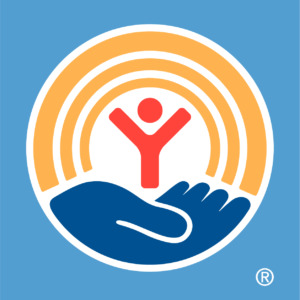Greater Philadelphia Kids Are Getting More Support This School Year
No internet. No computer.
That may sound like a punishment doled out by parents to kids who aren’t doing their chores. But for millions of kids, it’s an everyday reality that makes it challenging to succeed in school.
The digital divide in education is the gap between students who have reliable access to an adequate device and reliable internet and those who don’t. The gap has existed for decades – ever since personal computers gained popularity – but during the COVID-19 pandemic our community saw how deep the challenge runs.
United Way of Greater Philadelphia and Southern New Jersey is working to close the digital divide. During the past year as schools moved to remote learning, we worked closely with regional partners to coordinate PHLConnectED, a multi-year collaborative effort ensuring Philadelphia K-12 students can connect to digital learning opportunities at home. Additionally, United Way piloted the Vello Summer Reading Program for students in grade 1-5 grade in the greater Philadelphia region to receive one-on-one virtual tutoring from their home. The volunteer reading program features weekly guided reading sessions designed to improve students’ reading skills and overall engagement in reading activities. 470 students have participated in Vello in the Greater Philadelphia area since 2019, having logged 4,726 sessions and 2,364 hours of reading with their Vello Volunteers. As the new school year begins, we are planning to increase these efforts so more students in our community can thrive – no matter what the pandemic has planned.
Four reasons we are investing in closing the digital divide:
1. Closing the divide increases racial equity
According to Common Sense Media, 15 to 16 million students don’t have access to adequate devices or internet connection. That’s about 30% of all students in the U.S. But when the numbers are broken out by race, it becomes clearer students of color disproportionately have to deal with the challenges of the digital divide.
Students of color represent about 40% of the total population, but 55% of Black, Latinx and Native American students are part of the disconnected populations. Native Americans face the greatest challenge to access to devices and the internet; 37% of Indigenous students lack adequate connectivity.
Black, Latinx and Native American students may not have connectivity because of discriminatory housing practices that led to them growing up in neighborhoods that are under-resourced and lack high-speed internet, their families may have faced discriminatory pay practices that kept them from higher earning jobs making personal devices unaffordable, or they may face more language barriers that make adoption more difficult. Closing the digital divide gives students of color better opportunities to navigate these obstacles caused by systemic racism and more chances to thrive.
2. Increasing access supports kids in rural areas
Students in rural areas already face many challenges. They often attend under-resourced schools, must travel long distances to attend classes and schools struggle to attract top-quality teachers. The lack of access to devices or hardware is one more challenge rural students must overcome.
Similarly to students of color, rural students are disproportionately impacted by the digital divide. Common Sense Media notes that rural students makeup 12% of the total school population but comprise 20% of the disconnected population.
Unlike other common services such as electricity or telephone access, internet connection is not treated as a public utility. That means demand and interest in profits have largely determined where and when infrastructure like broadband internet are introduced to communities. Rural communities are often left out of that conversation, hurting economic growth, ability to attract new residents and local students. Addressing the digital divide can help overcome these challenges to give rural students more opportunities to succeed and be prepared for a digitally-based world.
3. There is a connection between access and higher GPAs
Access to the internet and devices might seem like a distraction for some kids, but research shows it also increases student grade performance. Researchers from Michigan State University connected higher grade point averages (GPA) with access to broadband internet and adequate at-home devices.
During the global pandemic, kids without access struggled to stay engaged as schools moved to remote learning. Slow internet, having to share devices with siblings, participating on smartphones instead of laptops all contributed. But these challenges extend beyond the pandemic. As more schools incorporate assignments that require online research, use digital tools to enhance learning and incorporate technology overall, students without at-home access will continue to fall behind.
4. Kids need digital skills for the workforce
Helping kids thrive in the workplace tomorrow starts by closing the digital divide today. A study from the University of Miami found that students with higher GPAs, those that have adequate access to technology, have higher earning potential. The study shows the multi-generational impact of increasing connectivity for individuals.
On top of the benefits for individuals, when students have more opportunities to secure high paying jobs that strengthens our local economy. A skilled, high performing workforce is essential to keeping our region thriving today as well as decades into the future.
There is still much to be done to close the digital divide. But together with generous donors, committed volunteers and community partners United Way of Greater Philadelphia and Southern New Jersey can continue to help kids thrive. To stay up to date with the latest on what we’re doing to close the digital divide and other ways we’re helping improve the health, education and financial stability of every person in our community, join our email list.

